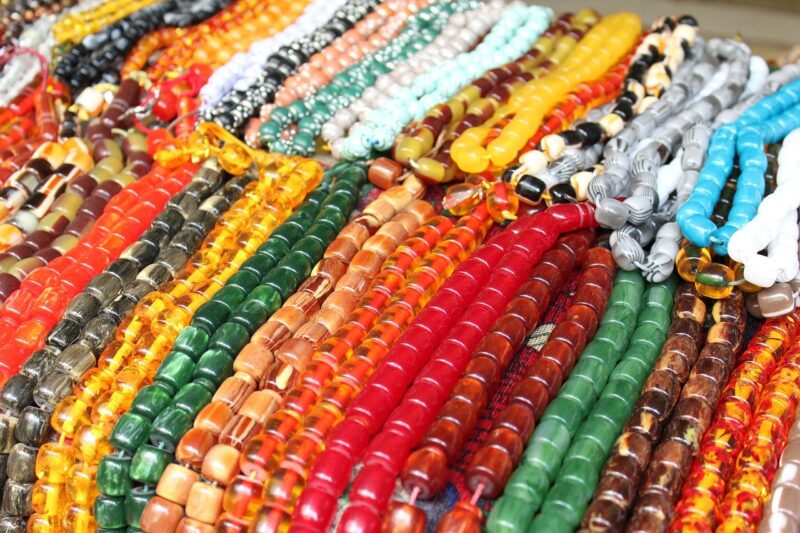The Astonishing Role of Beads, Shells, and Stones in Ancient Trade, Art, and Rituals
November 17, 2024

Beads, shells, and stones have been intrinsic to human culture for millennia, serving purposes far beyond mere decoration. From the earliest days of civilization, these artifacts have played astonishing roles in trade, artistic expression, and spiritual rituals. Understanding their significance opens a window into ancient societies and their intricate economic and cultural practices.
1. The Historical Context of Beads, Shells, and Stones
The use of beads, shells, and stones dates back to the prehistoric era. Archaeological findings suggest that some of the earliest decorative objects were fashioned from materials readily available in the environment. Shells were harvested from coastlines, beads were carved from stones and bones, and these materials became both aesthetic pleasure and functional items within indigenous communities.
The significance of these items transcended their visual appeal; they were also pivotal in establishing social hierarchies and facilitating trade among different cultures. For instance, certain beads, such as those made of turquoise or lapis lazuli, became highly sought after and were used as a form of currency.
2. Beads as Trade Commodities
Beads emerged as one of the earliest and most versatile forms of currency in ancient trade networks. In many cultures, specific beads were used to denote wealth and status. They were often crafted with immense skill and traded over vast distances.
– Examples of Beads in Trade:
– Mesopotamian Civilizations: Beads made from lapis lazuli and shell were prized commodities that frequently circulated along trade routes connecting to the Indus Valley.
– African Trade Networks: The use of glass beads became widespread during trade with European colonial powers. These beads were exchanged for gold, ivory, and slaves, weaving a complex web of economic interaction.
– North American Indigenous Cultures: Beads made from seeds, shells, and stones were traded among tribes, often serving as gifts, territorial markers, and negotiating tools at gatherings.
The durability, portability, and desirability of beads made them an ideal choice for trade, leading to their recognition as one of humanity’s first universal currencies.
3. Artistic Expression with Beads and Stones
The artistic potential of beads, shells, and stones allowed ancient societies to express their identities, beliefs, and aesthetic values.
– Techniques and Artistic Uses:
– Bead Weaving and Embroidery: Many cultures incorporated beads into textiles, creating intricate patterns and designs that held meaning beyond decoration. Native American tribes, for instance, utilized beadwork to tell stories and commemorate events.
– Carving and Sculpting Stones: Stones were often intricately carved into figures or symbols—each piece reflecting the spiritual or cultural essence of the community. Ancient Egyptians, for example, crafted amulets from stones, believing they provided protection.
– Shell Art and Functional Objects: Shells were not only used to create jewelry but also formed functional items such as utensils, tools, and ceremonial objects. The detailed work involved in transforming shells into art showcases the resourcefulness and artistry of ancient peoples.
This artistic heritage demonstrates how beads and stones transcended utility to embody the creative spirit of ancient cultures.
4. Spiritual and Ritualistic Significance
Beyond commerce and artistry, beads, shells, and stones held profound spiritual significance in many cultures. These objects were often featured in rituals, symbolizing connections to the divine, ancestors, or nature.
– Ritualistic Uses:
– Amulets and Talismans: In various cultures, beads and stones were fashioned into amulets believed to offer protection, healing, or good fortune. Ancient Egyptians placed amulets in tombs to assist the deceased in the afterlife.
– Ceremonial Tools: Beads were often strung in necklaces or bracelets used in rituals, reflecting the wearer’s status or role within the community. For instance, Hindu cultures utilize mala beads during meditation and prayer, each bead symbolizing a mantra.
– Connection to Nature: Many indigenous cultures reverence natural elements, and using shells or stones in rituals symbolizes unity with the earth. The Inuit, for example, use caribou bone and shells in their spiritual practices to honor the animals they depend on for survival.
This spiritual dimension of beads, shells, and stones reveals the deep connections ancient societies had with their environment and the metaphysical beliefs that informed their existence.
5. Trade Routes and Cultural Exchange
The circulation of beads, shells, and stones across ancient trade routes illustrates the concept of cultural exchange. As merchants traveled, they not only exchanged goods but also ideas, customs, and art forms, enriching their own cultures.
– Influence on Societies:
– The Silk Road: This crucial trade route facilitated the exchange of beads from the Mediterranean to the Far East. Through this interaction, new types of bead designs were introduced, stimulating local creativity.
– Marine Trade Routes: Coastal communities exchanged shells and coral, leading to the rise of specific styles unique to the regions influenced by maritime trade.
– Colonial Impact: The introduction of glass beads to African markets by European colonizers not only transformed local economies but also initiated shifts in artistic expression as communities integrated these materials into traditional practices.
The free flow of beads, shells, and stones amongst diverse cultures underlines the importance of intercultural dialogue and the enduring legacy of ancient trade in shaping human history.
6. Modern Implications and Continued Relevance
Even in contemporary times, the impact of ancient trade involving beads, shells, and stones remains evident. Modern fashion and art continue to find inspiration from these historical practices. Beadwork has gained renewed interest, connecting the past with present artistic expression through indigenous and contemporary designs.
Additionally, the revival of shell jewelry highlights how ancient materials can be reinterpreted to resonate with modern aesthetic values. Jewelry made from natural shells has gained popularity, often tapping into the spiritual connections associated with them.
Conclusion
The astonishing role that beads, shells, and stones played in ancient trade, art, and rituals underscores their significance beyond mere objects. They are powerful symbols of human creativity, cultural identity, and the intricate web of connections that weave through our shared history. Understanding their multifaceted roles enables us to appreciate the complex tapestry of human culture through the ages and inspires us to honor the legacies that continue to resonate today.
Whether you’re drawn to their beauty, the stories they tell, or the richness of the cultures they represent, beads, shells, and stones will undoubtedly remain essential components of humanity’s artistic and spiritual journey.








